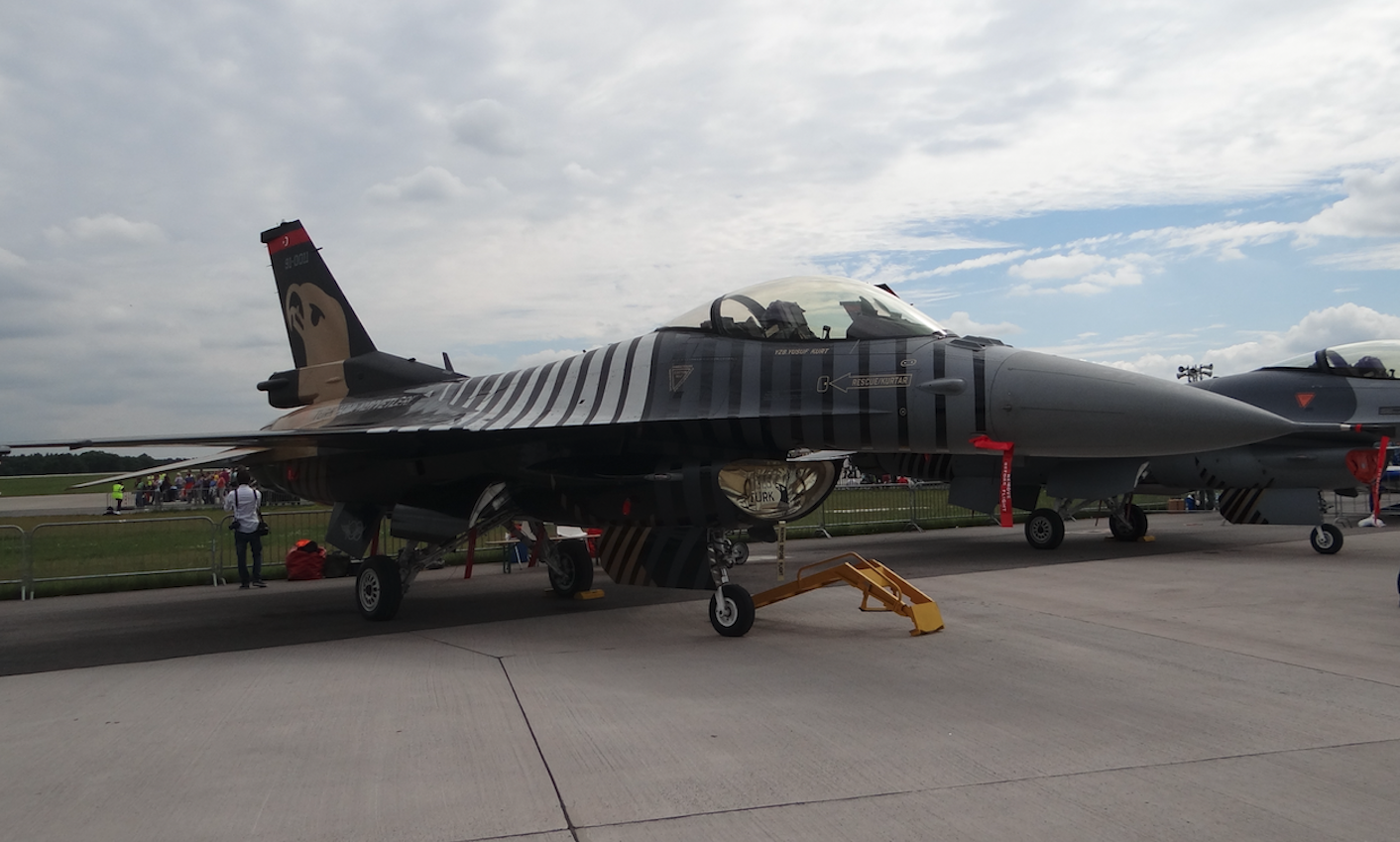Kraków 2005-03-14
General Dynamics F-16 A, B. 1974
Section 1974-02-02. The modern fighter aircraft. First generation.
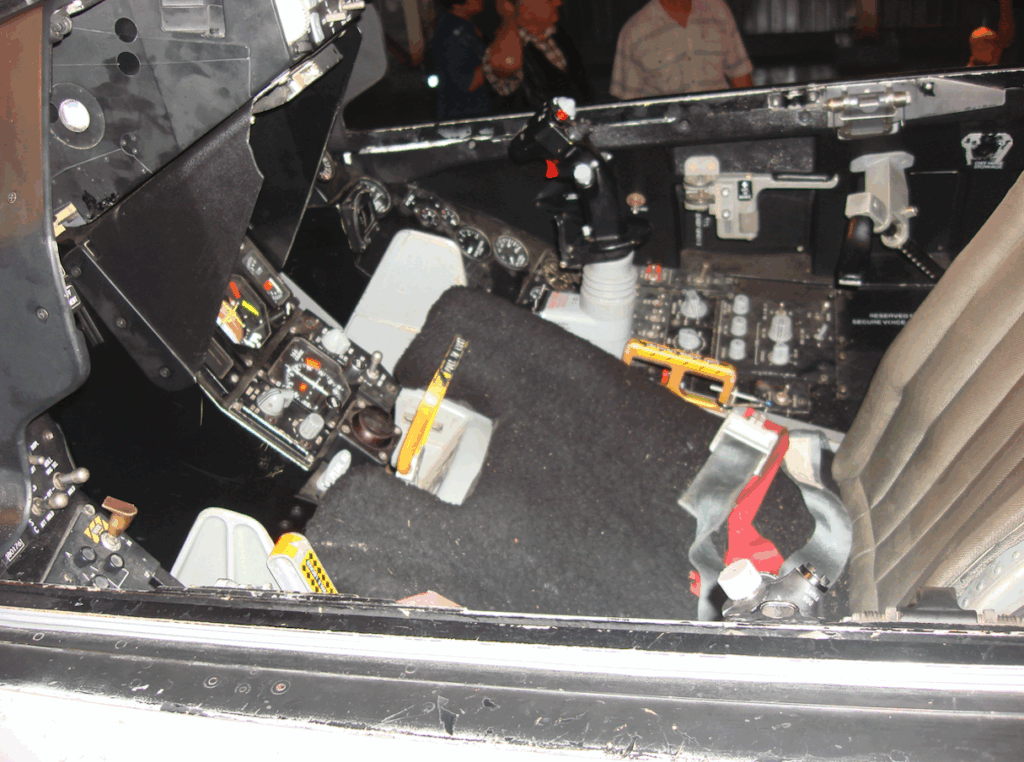
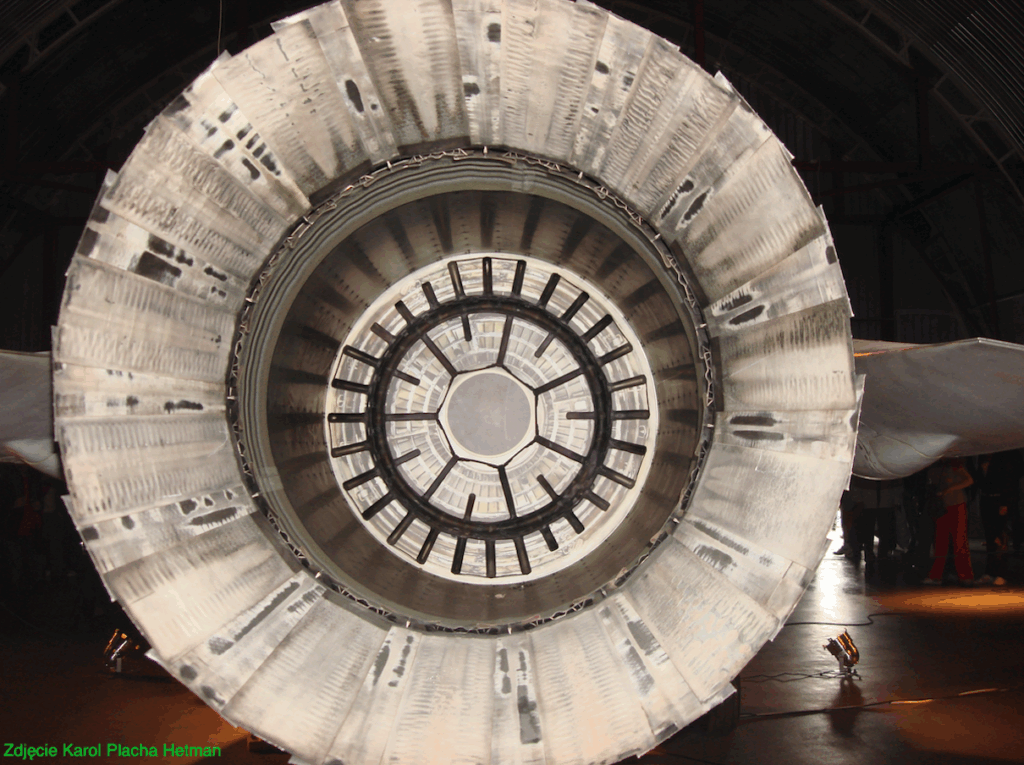
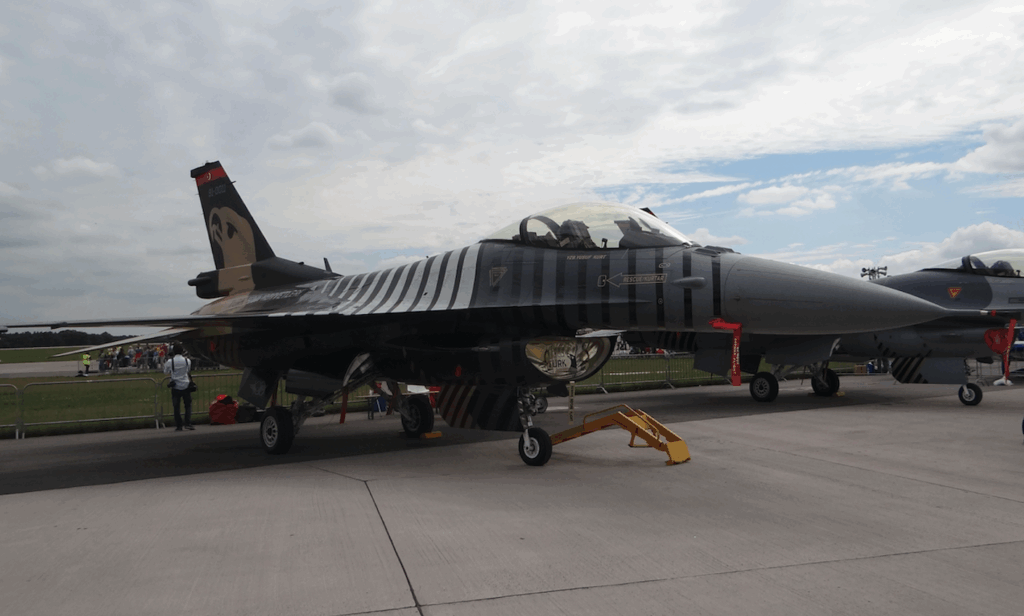
F-16 Design.
In March 1993, Lockheed acquired General Dynamics’ fighter division and its plant in Fort Worth. This plant produced F-16 aircraft and components for the F-22. The transaction was valued at approximately $1.5 billion. In 1995, Lockheed merged with Martin Marietta, creating Lockheed Martin Aeronautics. The latter part of the name is now often omitted. It’s worth noting that the F-16, manufactured by Lockheed Martin, which acquired General Dynamics’ fighter division, is the recipient of the Hughes Trophy, the U.S. Air Force’s most prestigious air superiority award, and the Gunsmoke Award for air-to-ground combat.
The F-16 A/B is a single- or two-seat, single-engine, medium-wing aircraft. Its modular design is designed to withstand 9g forces. It is designed for maneuverable, visual engagement.
The wings are trapezoidal, NACA 64A-204, with a 40-degree leading edge sweep, and feature no lift. The wing aspect ratio is 3.2m, and its area is 27.87 m². The wing structure is a multi-spar, two-piece, semi-monocoque, fail-safe design. It consists of 12 spars and five split ribs, including four reinforced ribs to which the hardpoints are mounted. The spars terminate with milled flanged fittings for attaching the wings to the fuselage. The wing skin is made of single sheet metal. The wing interior is used for fuel tanks. The leading edge features sandwich-type flaps with honeycomb filler, each with an area of 3.41 m². The trailing edge features flaperons and ailerons, also sandwich-type with honeycomb filler. These span 70% of the wing’s span and are interchangeable. Both have an area of 2.91 m².
The fuselage is a semi-monocoque, metal, fail-safe design. The fuselage is partially load-bearing, so when we talk about the wing strips of this aircraft, we’re referring to the side sections of the fuselage capable of generating lift. It’s technologically divided into three sections and an air intake module. The forward section houses the radar station, the pilot’s cockpit(s), the forward fuel tank, and the cannon with ammunition drum. The middle module consists of 24 stringers and 8 power frames. The landing gear and its bays are attached to this section. The interior also contains an air duct and fuel tanks, and the dorsal section houses a device for in-flight refueling. The rear section of the fuselage consists of two side booms terminated with crocodile-type brake flaps, with a maximum deflection of 60 degrees. The booms are connected to the engine above and supplemented with lower reinforcements, which also hold the landing hook. The airtight, air-conditioned cockpit. The instrument panel features three screens (cathode ray tube monitors) supplemented by a head-up display. Traditional instruments have been reduced to a minimum and serve as emergency controls. Equipment requiring air conditioning is located beneath the instrument panel. The Aces II 0-0 ejection seat reclines 30 degrees to improve the pilot’s G-force tolerance. The cockpit glazing is made of a single sheet of 14-layer polycarbonate. The fairing lifts upwards and rearwards. A small rear window complements the glazing. Visibility is excellent at 360 degrees horizontally and 270 degrees vertically. In the cockpit, a joystick is mounted on the right-hand console/armrest instead of a central joystick.
The tailplane is classic. Vertical, with a 45-degree sweep, an area of 5.09 m², and a four-spar semi-monocoque structure. Carbon composite skin. The leading edge is a sandwich construction with honeycomb filler. The sandwich-composite rudder with honeycomb filler, suspended at three points, has an area of 1.08 m². The rudder control elements and some equipment are mounted in the tailplane base. The horizontal tailplane is plate-shaped, trapezoidal, with a 40-degree sweep and a 10-degree negative lift. Structurally, it consists of a single titanium spar and a duralumin auxiliary spar. The remaining structure consists of cellular filler and composite sandwich skin. The horizontal tailplane is inter-alternating. The horizontal tailplane spans 5.58 m and has an area of 5.59 m². The tailplane is complemented by two aerodynamic vanes with a trapezoidal outline, each splayed 10 degrees laterally. The composite structure with cellular filler.
The landing gear is a three-spoke, single-wheel, retractable landing gear. The front landing gear is mounted on a semi-fork, steerable, and retracts rearward, flat. Dimensions: 0.457 x 0.145 mm, with a pressure of 2.07–2.14 MPa. The main landing gear features disc brakes with an anti-skid system (ABS), which retract forward and rotate 90 degrees to lie flat against the air duct. Dimensions: 0.705 x 0.222 mm, with a pressure of 1.45–1.52 MPa. Oil-gas shock absorbers are located in the legs. The landing gear base is 4.00 m, and the wheelbase is 2.36 m.
F-16 A/B powerplant.
The Pratt Whitney F-100 PW-100 engine has a thrust of 1 x 66.70 kN, and with afterburning 1 x 111.20 kN (1 x 11,300 kgf). It is a bypass engine. It consists of a 3-stage fan, a 10-stage axial compressor, an annular combustion chamber, a 2-stage high-pressure turbine, a 2-stage low-pressure turbine (fan), an afterburner, and a hydraulically adjustable nozzle. The engine weighs 1,370 kg, is 4.855 m long, has a diameter of 1.180 m, and has a bypass ratio of 0.7. Fuel consumption is 0.693 kg/kGh, and with afterburning 2.60 kg/kGh. Compression ratio is 1:25. The temperature upstream of the turbine is 1,672 K. Cooled turbine blades. Wing and fuselage tanks have a capacity of 3,126 kg. Additionally, a maximum of 2,936 liters can be suspended under the wings in a single system; 2 x 1,400 liters and 1 x 1,136 liters under the fuselage. All aircraft can be refueled in mid-air.
F-16 A/B Avionics
Initially, a Westinghouse AN/APG-66 pulse-Doppler radar station with a 46 km range and a Deko M 362 F digital computer.
An AN/ALR-56 M or Victor AN/ALR-69 warning device.
Communications system: Magnavox AN/ARC-126 or -164 UHF radio with a KY-58 voice encryptor, Collins AN/ARC-186 or -205 VHF radio (AM/FM), and KIT-1 A/TSEC data encryptor.
Two-seat version: AN/AIC-18, -25 onboard intercom.
Radio navigation equipment: AN/APN-232 radio altimeter, Collins AN/ARN-108 ILS, AN/ARN-118 Tacan, AN/APX-101 IFF transporter, and Rockwell Navstar GPS navigation system. Singer Kearfott SKN 2400 inertial navigation system.
Litton LN-93 or Honeywell H-523 air data computer.
Weapons and avionics computers.
Self-protection system; Tracor AN/ALE-40(V)-4 or AN/ALE-47 flare dispenser.
AN/ALQ-131 and -14 electronic jamming systems.
Equipment.
FBW control system, by Bendix-King, fully electronic. All surfaces are controlled by electrically controlled hydraulic motors and actuators. Eight hydraulic motors are used to operate the nose flaps, six to extend the flaperons, two to the horizontal tail, one to the rudder, and two to the airbrakes. These motors provide very high angular speeds, reaching 52°/s. The front flap deflection is automatic and depends on the Mach number and the wing angle of attack. The control process itself is implemented by a computer system and a four-channel network with an artificial stability and active control system, which utilizes data from sensors (speed, angle of attack, sideslip angle, aircraft attitude, and three-axis acceleration) and the pilot’s control stick. The system actively dampens self-excited vibrations, counteracts gusts, and suppresses harmful vortices during high-angle flight. The entire system consumes up to 12 kW of power.
Electrical system.
Garrett emergency auxiliary turbine. 24/28 V DC, 115 V/400 Hz single-phase AC, 60 kVA main generator, 10 kVA backup generator, 17 Ah 4-cell battery for powering the control system computers, 5 kVA emergency generator.
Dual-circuit hydraulic system, operating pressure 20.6 MPa, capacity 161 liters.
Oxygen and air conditioning systems.
Armature.
General Electric M61A1 20 mm 6-barrel electric rotary cannon with 511 rounds. Rate of fire 6,000 rounds/minute.
9 weapons hangers with a capacity of; For maneuvers above 5.5g – underfuselage 1 x 1,000 kg, underwing inner 2 x 2,041 kg, midwing 2 x 1,587 kg, outer 2 x 318 kg, tail 2 x 193 kg. For maneuvers above 9g, limited – 1 x 544 kg, 2 x 1,134 kg, 2 x 907 kg, 2 x 204 kg, 2 x 193 kg.
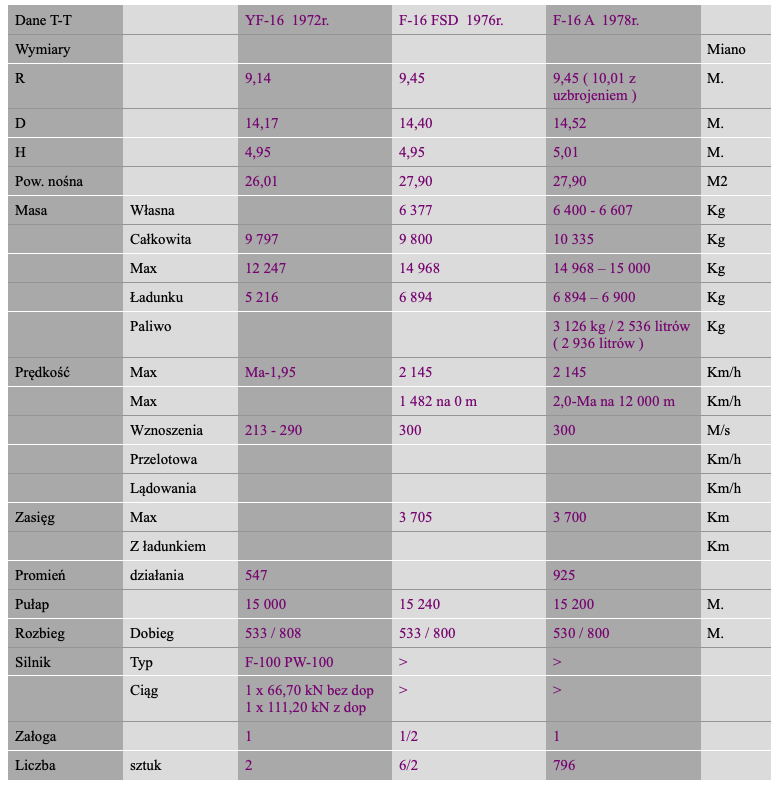
Written by Karol Placha Hetman

